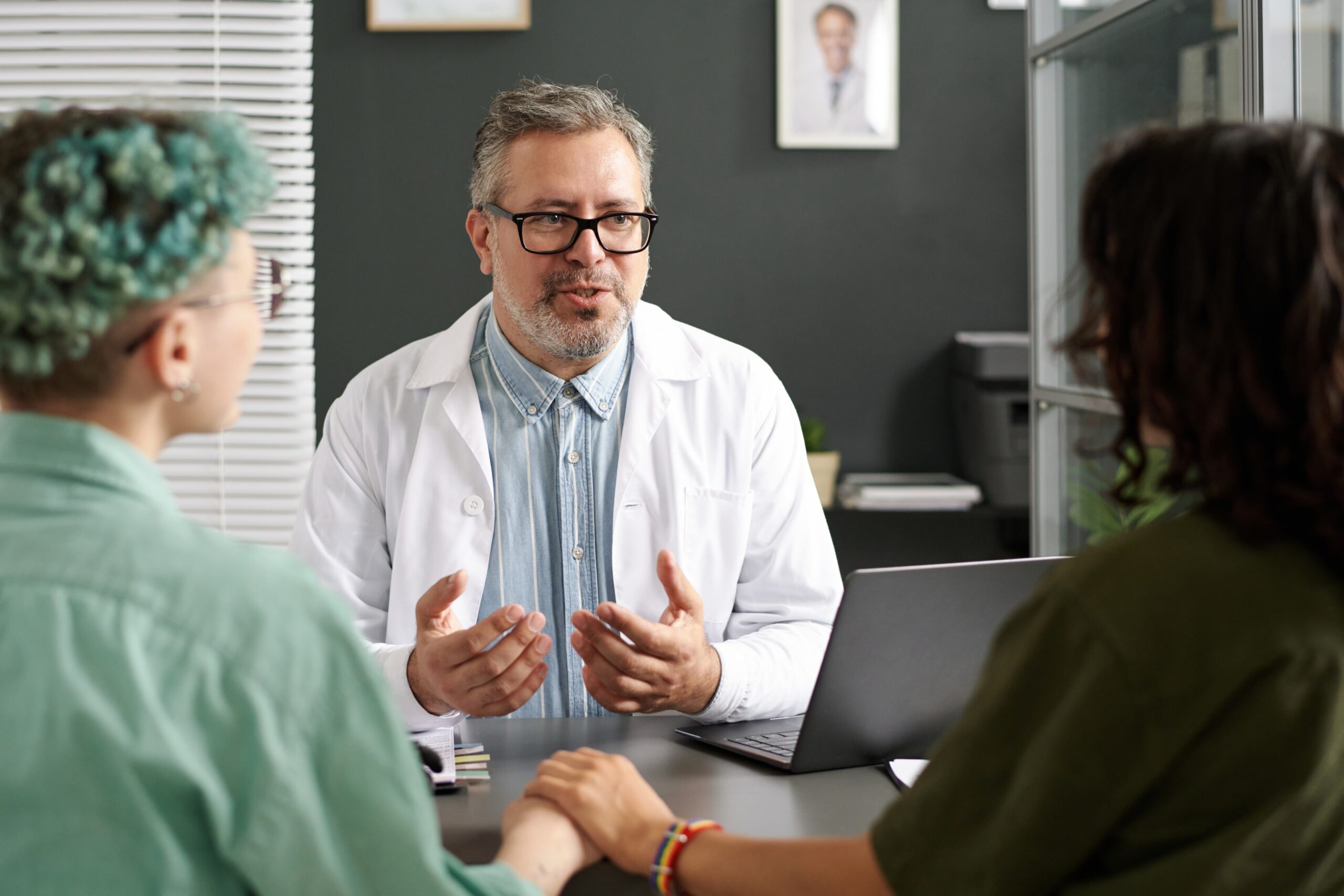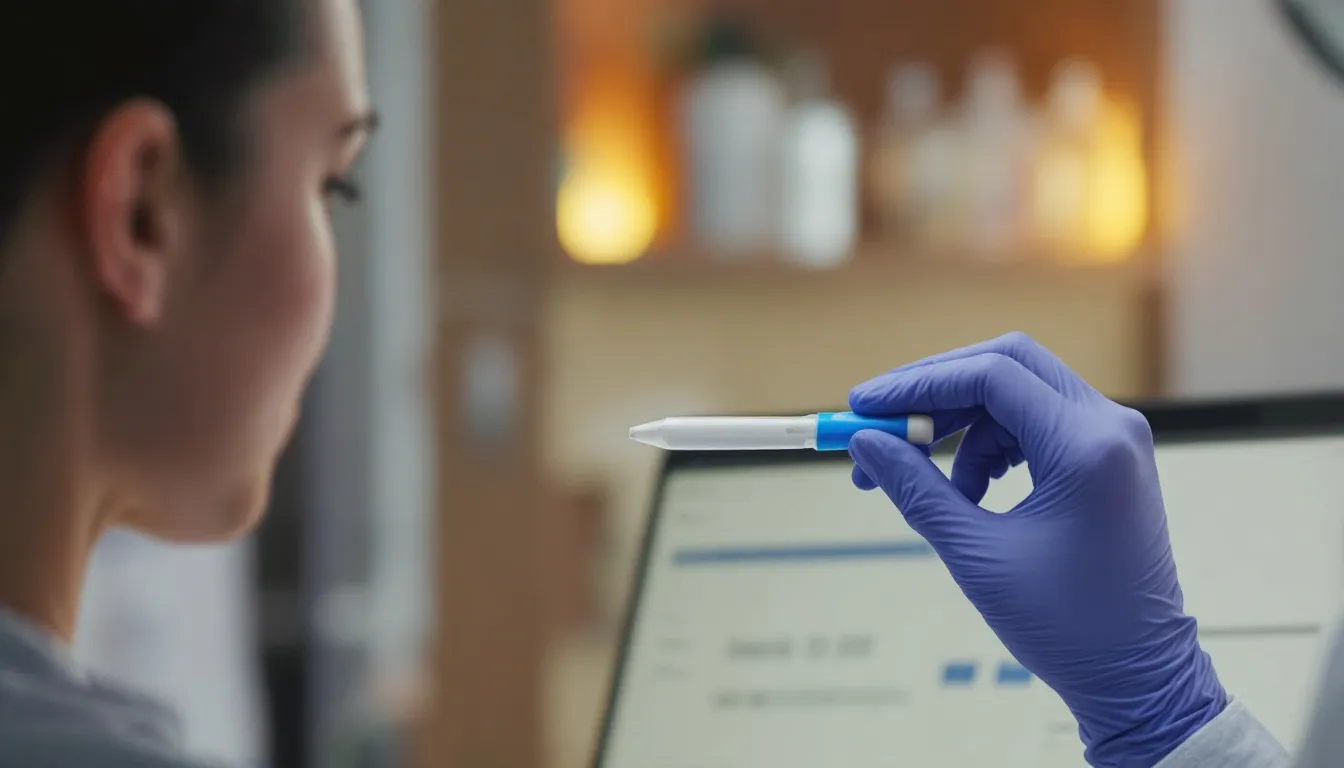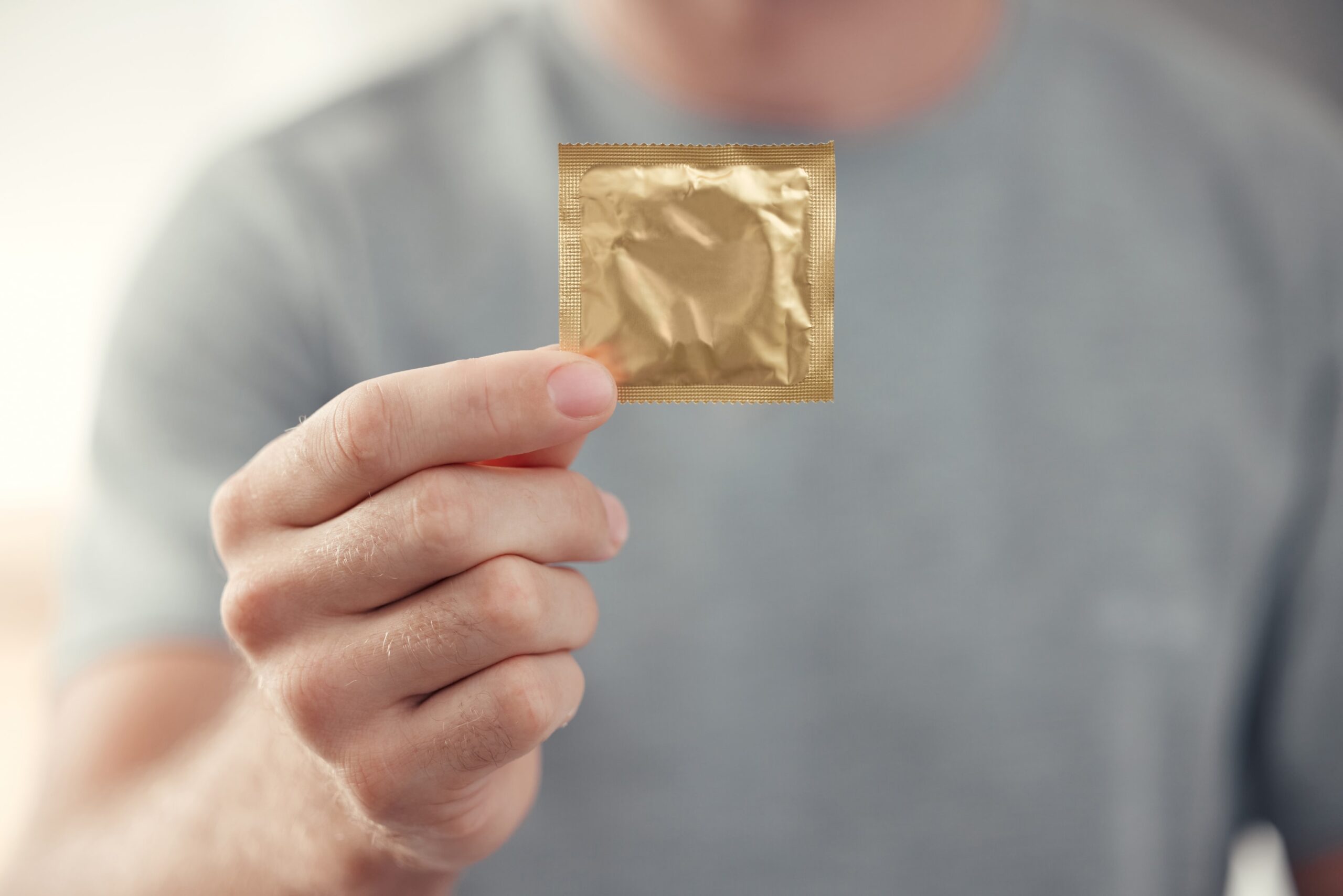What are the chances of getting chlamydia from one encounter? The level of risk varies, but it can be significant. This article examines the factors that influence your risk and how to safeguard yourself.
Key Takeaways
- The risk of contracting chlamydia increases significantly with unprotected sex, multiple partners, and an infected partner.
- Many individuals with chlamydia are asymptomatic, making regular STI testing crucial for early detection and treatment.
- Prompt treatment and communication with sexual partners are essential to prevent complications and the spread of chlamydia.
Risk Factors for Chlamydia Transmission in One Sexual Encounter

Several factors can affect the likelihood of contracting chlamydia from a single sexual encounter. These elements encompass the kind of sexual activity engaged in, whether protection was employed during sex, and whether your sexual partner carries the infection.
Engaging in unprotected sex dramatically raises the probability of catching chlamydia during just one sexual encounter. This risk is amplified if your partner has an active infection or if you have multiple partners involved in your sexual activities.
Unprotected Sex and Chlamydia Risk
Engaging in unprotected sex, which encompasses activities such as vaginal or anal sex without a condom and oral sex, substantially increases the likelihood of acquiring STIs like chlamydia and other genital infections. This elevated risk is due to direct contact that facilitates the easy transfer of bodily fluids between individuals, thereby spreading the infection. A single sexual encounter with someone who carries an STD can pose a 30% chance of transmission through various forms of sexual contact.
Since neglecting to use protection during any form of sex puts you at an increased risk of catching chlamydia, among other sexually transmitted diseases, it’s exceedingly important to use condoms, which greatly reduce this danger and aid in safeguarding your overall sexual health.
Role of Partner’s Infection Status
The probability of contracting chlamydia is greatly influenced by whether your sexual partner has the infection. If your partner is infected, especially if they display symptoms, this poses a higher risk for transmission since symptoms may suggest an increased level of bacteria, which could be passed on during a sexual encounter.
It’s beneficial to understand both your partner’s infection status and the specifics regarding your mutual sexual activities when evaluating personal risk levels. Transparent discussions concerning one’s sexual health, coupled with routine screenings, are effective strategies in diminishing the likelihood of acquiring chlamydia from an infected partner.
Influence of Multiple Partners
Having multiple sexual partners increases the likelihood of being exposed to sexually transmitted infections, such as chlamydia. With every new sexual partner, there is an increased risk that one may contract a chlamydia infection. The probability of transmission grows with the number of partners because it raises the chance that at least one partner may harbor this sexually transmitted infection.
It’s imperative to keep track of your sexual partners’ health concerning infections and to consistently practice protected sex when you have sex with multiple partners. These precautions are essential in reducing the heightened risk associated with having several sexual encounters.
Symptoms to Watch For After a Sexual Encounter

Following a sexual encounter, especially one that was unprotected, be aware of the signs of chlamydia. Recognizing the genital infection early can facilitate prompt treatment and avert significant health issues. Nevertheless, given that many individuals may not exhibit any symptoms at all, maintaining routine STI testing becomes crucial.
Understanding the typical indications of chlamydia in both men and women is vital because asymptomatic infections are common with this condition.
Common Symptoms in Men and Women
Symptoms of chlamydia can differ for men and women. Women may experience abnormal genital discharge that could be white, yellow, or gray in color, along with painful urination. These symptoms are often confused with other types of infections. In contrast, men usually notice a discharge from their genitals as well as a burning feeling when they urinate.
It is important to identify these symptoms early to ensure swift diagnosis and treatment of chlamydia. Should you recognize any signs, undergo testing, and consult with a healthcare professional.
Asymptomatic Infections
Chlamydia might not show any symptoms of the infection, making it quite simple to miss. As many as 70% of those afflicted by chlamydia can be asymptomatic, leading them to inadvertently pass on the infection. Hence, periodic screenings for STIs are essential for individuals who are sexually active.
Consistent screening is key in detecting and managing infections promptly, forestalling chronic health problems, and curbing transmission of the disease, even when symptoms are absent.
Testing for Chlamydia Post-Encounter

For both your well-being and that of your partners, undergo testing for chlamydia following a sexual encounter. To guarantee precise outcomes, it’s imperative to be tested within the appropriate time period. Early detection of infections through consistent STI testing can thwart potential health issues.
Knowing when to get tested and recognizing the various methods used to identify chlamydia are vital.
Timing of Tests
To ensure accurate results, individuals are encouraged to get chlamydia testing 1 to 5 days after a potential exposure. Symptoms of the infection may appear between one week and several months after exposure. Taking the test during this timeframe allows enough time for the bacteria to multiply so that they can be detected.
Regular STI screenings are crucial for sexually active individuals since they help detect infections early, thus safeguarding sexual health and lowering the risk of HIV infection.
Types of Tests
Primarily, chlamydia diagnosis is conducted using urine samples and various types of swabs—such as throat, rectal, and genital ones—rather than through blood tests. Urine sample testing is the most common method for identifying this infection. These diagnostic methods are known for their high accuracy. Early and prompt detection enabled by these tests allows for immediate treatment, which is crucial in stopping the transmission of chlamydia.
The Importance of Prompt Treatment
Prompt treatment of chlamydia helps prevent serious health complications such as chronic pelvic pain and infertility. Timely testing and treatment are crucial for avoiding these outcomes and limiting the spread of the infection.
Let’s explore the standard antibiotic therapies for chlamydia and the significance of treating sexual partners.
Antibiotic Treatments
Antibiotics prescribed for chlamydia are recognized for their high effectiveness. When these medications are taken correctly, they typically result in a rapid recovery from the infection. To ensure that the infection is completely eliminated, it’s crucial to follow the entire antibiotic regimen as instructed.
By aiding in healing and halting the transmission of chlamydia, treatment contributes significantly to controlling the disease effectively.
Treating Sexual Partners
To prevent the recurrence and wider spread of chlamydia, it is crucial to notify and treat any recent sexual partners. After receiving a positive test result, contact these partners and encourage them to get tested and treated.
These measures break the transmission cycle of chlamydia, protecting not only your own sexual health but also that of each partner involved.
Preventive Measures to Reduce Risk

Preventive measures are essential to reduce the risk of contracting chlamydia. Safe sexual practices and regular STI testing significantly lower your chances of infection.
The use of condoms and regular STI testing are key preventive measures.
Use of Condoms
Condoms are highly effective at preventing sexually transmitted infections like chlamydia when used correctly and consistently. However, while condoms greatly reduce the risk, they do not eliminate it entirely.
Choosing the right condom and using it properly maximizes protection. Always read the package label for specific details to help prevent STIs.
Regular STI Testing
It is advised that individuals who are sexually active, especially women younger than 25 and those engaging with multiple partners, undergo routine screenings. An annual test for chlamydia, along with other sexually transmitted diseases, constitutes a sound health measure.
The advent of at-home STI testing kits provides a discreet and practical option for personal screening purposes.
Complications from Untreated Chlamydia
If chlamydia is not treated, it can result in significant health complications such as pelvic inflammatory disease (PID), which increases the likelihood of infertility among females. In males, if chlamydia remains untreated, it may lead to epididymitis—a condition characterized by the painful inflammation of the testicles due to infection.
It’s crucial to delve deeper into the distinct hazards that untreated chlamydia poses for both women and men.
Risks for Women
If chlamydia is not treated in women, it can lead to severe issues such as pelvic inflammatory disease and ectopic pregnancy. An ectopic pregnancy occurs when a fertilized egg settles outside the uterus, which could potentially result in dangerous complications.
It is crucial to seek immediate treatment for chlamydia to prevent these serious health problems and preserve fertility.
Risks for Men
If chlamydia is not addressed in a timely manner, men can suffer from epididymitis, which causes painful inflammation of the testicles and could result in more serious problems if neglected.
Addressing this issue promptly ensures the preservation of overall sexual health by preventing such complications.
Summary
To sum up, understanding the risks, symptoms, testing, and treatment options for chlamydia is crucial for maintaining your sexual health. By practicing safe sex, getting regular STI tests, and seeking prompt treatment when necessary, you can protect yourself and your partners from this common but serious infection.
Taking control of your sexual health is empowering, and with the right knowledge, you can make informed decisions and live a healthier life.
Frequently Asked Questions
How soon after a sexual encounter should I get tested for chlamydia?
You should get tested for chlamydia 1 to 5 days after a sexual encounter to ensure accurate results. This timing allows for the reliable detection of the infection.
What are the common symptoms of chlamydia in women?
Common symptoms of chlamydia in women include unusual genital discharge and pain during urination.
Can chlamydia be asymptomatic?
Yes, chlamydia can be asymptomatic in up to 70% of individuals, underscoring the importance of regular testing for early detection.
What is the standard treatment for chlamydia?
Antibiotics are the go-to remedy for chlamydia and yield excellent results when used according to instructions.
How can I prevent contracting chlamydia?
To prevent contracting chlamydia, practice safe sex by consistently using condoms and ensure you get regular STI tests.
Sources
STD Center: What are the odds of contracting 9 different STDs from a single heterosexual encounter? – https://stdcenterny.com/articles/std-risk-with-one-time-heterosexual-encounter.html
CDC: About Chlamydia – https://www.cdc.gov/chlamydia/about/index.html
Mayo Clinic: Chlamydia trachomatis Overview – https://www.mayoclinic.org/diseases-conditions/chlamydia/symptoms-causes/syc-20355349
